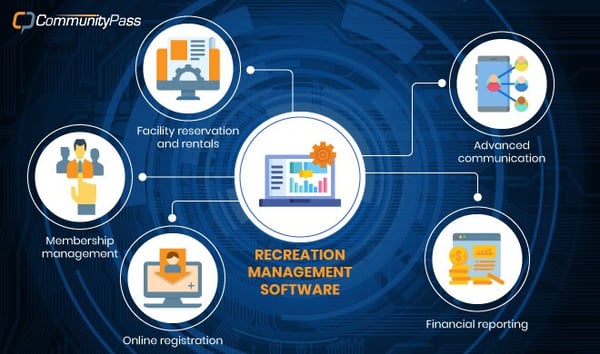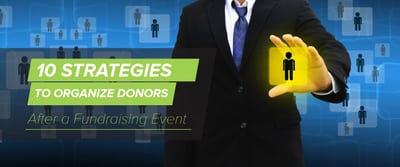

Each year it seems like it gets harder and harder to develop parks and recreation programs that your community genuinely wants to attend.
This is why parks and recreation marketing is so important.
According to the 2018 NRPA report on parks and recreation engagement, 17% of Americans said that the top barrier to them enjoying their local recreation facilities and programs is lack of information. With new technology and tools making experiences – both digital and in-person – so accessible, it’s hard for your own programs and events to stand out.
Whether your goal is to engage new community members or spread awareness of an upcoming event, recreation marketing is one of the key ways to attract more attendees and maximize your parks and recreation program success.
Before we dive into what recreation marketing really is, let’s talk about the recreation industry. The recreation industry is dedicated to providing experiences consisting of programs or events for community members in order to relax, enjoy themselves, and connect with each other. For example, offerings for fun community events can include digital events hosted online to more traditional in-person programs like youth sports leagues.
The reason why recreation marketing is unique is that you aren't advertising physical items, but experiences. Parks and recreation activities are all about learning a skill, building memories, and simply having a good time. Activities like this might seem like they should sell themselves, but there are some challenges that come with modern times.
Because of the internet and the ability to instantly connect, our world is more saturated with experiences than ever before, burying your recreation programming before anyone even notices.
That is why it’s so crucial that you build out your recreation marketing strategy now. Whether it’s through your online website, social media platforms, or physical fliers around town, it’s important that you reach your target audience and provide them with valuable experiences.
As you determine the best way to spread the word about your parks and recreation programming, it’s important to always consider your audience, your program, and your main goals. With these key bits of data, you’ll know where to best reach your community members and create experiences that they’ll genuinely be excited about.
For instance, if you know that a lot of families live in your area, a great idea to increase program attendance can be a virtual scavenger hunt or other activities that families can do together.
That’s why it’s important to invest in capable parks and recreation management software. This way you have all the necessary tools to create your programs, facilitate registrations, and engage with community members. And with all of your tools connected in one software system, you have a more comprehensive look at your recreation programming data and can best determine your marketing strategy.

One of the most important aspects of any type of marketing strategy is the content you create. Throughout all of your physical and digital resources, your content should be relevant, engaging, and showcase the best parts of your event.
Consider the following best practices when creating content for your recreation programming:
Your recreation marketing content is important to effectively convey your programs and events to community members. Make sure it accurately reflects your offerings as well as gives the audience a clear way to register and sign up!
In order to have a successful and engaging marketing campaign, you need to maintain consistent and effective communication with your audience. Sending out reminder emails for upcoming events is a great way to advertise new events. Plus, you can keep registered guests updated on new details and how to prepare for the big day.
However, it can get tedious for your team to send out the right emails to the right person at the right time. For instance, you don’t want to send out emails advertising the event to someone who has already registered. People’s inboxes are already flooded with content and you don’t want your programming to gain the reputation for sending emails that get instantly moved to spam.
Take a look at your parks and recreation management tools and make sure your communications tools has the following abilities:
With an effective communications tool, it’s easy to optimize email correspondences with community members. Make sure that through it all, you’re avoiding mass emails and using your tools to instead create meaningful, targeted content for all audiences.
Social media has become one of the most popular ways to engage with constituents. It’s no longer just for the young and tech-savvy. According to Pew Research, 7 in 10 Americans use social media to engage with others.
If your parks and recreation program doesn’t already have social media accounts, now is the time to start. It’s a great way to showcase past successful events and advertise upcoming ones! And best of all, most popular platforms are free to use and sign up for.
However, you probably don’t want to make a social media account on every platform available. Look at your recreation software and see if you have any data points on platforms your members are already active. For example, if many of your community members have an Instagram account, that’s the best place to start. It’s way more effective to focus on a couple of social media platforms and really engage your audience rather than spreading yourself too thin over many.
Social media is also a great place to further relationships with community members that already support your programs. Make sure to advertise your social media handles in email signatures and on your website to get a sense of who your active supporters are. From there, you can interact with followers by replying to comments or even reposting a community member’s photo from a past event (with their permission of course).
As you develop your parks and recreation marketing strategy, you’ll soon learn that this is one of the best ways to diversify your audience and reach new community members. With more online marketing tools and the wide reach of the internet, it’s easier than ever to encourage a growing audience to register for events.
The top way to attract more people to your parks and recreation activities is to create experiences that appeal to different groups of people. According to parks and recreation professionals from The Learning Resources Network, your programs should be diverse enough to meet specific needs of different generations.
More teenagers and young adults might go to parks and recreation events if there were some that interested them, but often the programs are targeted to younger children and adults with families.
To diversify your audience, first diversify your programming. This not only means adding more traditional in-person activities, but incorporating digital events as well! Then, figure out the best way to reach these different types of people by utilizing multiple marketing channels.
A good trick to boosting your parks and recreation program’s registration rates is to provide incentives and discounts. This is a great way to motivate community members to attend more events while also rewarding them for their support.
Consider the following tactics and methods:
It’s crucial that your community members know that you genuinely appreciate their support and participation in your recreation programs. Utilizing incentives and discounts is a great way to express that gratitude while also laying the foundation for future engagements!
As you continue to market your various parks and recreation programs and events, you’ll start to notice a few common must-dos and definite don’ts that you should follow. Consider the following as you work on your next recreation marketing campaign.
While it may be possible to conduct all programs and events manually or through a piecemeal solution, your best bet for success is to invest in recreation management software. This way, registrations, program planning, member communications, and more can all be accessed in one easy to use platform.
In order for any organization to keep improving, there has to be consistent review of past data. This way, you know how to better your offerings and bring genuine value to your community. If you realize that your last community fundraiser walk-a-thon generated a lot of participation and excitement, consider making it an annual event.
No matter what, your parks and recreation programming and events should be created with your community members’ needs in mind. After all, those are the people who are signing up and supporting your offerings. Send out a regular poll after each event asking attendees what went well and what can be improved, giving you concrete data as you move forward and plan the next one.
As discussed earlier, your marketing content is one of the best ways to reach an audience and showcase your offerings. Consider implementing multimedia into that strategy, with video being a top choice. Currently, 92% of marketers say that video is an important part of their marketing strategy with 88% of marketers, say that it provides them with a positive ROI. However, don’t risk misusing video content by overdoing it or creating videos without a clear message.
These days, the vast majority of people own mobile phones with internet capabilities. Pew Research even says that roughly one in five American adults are “smartphone-only” internet users. This means that their mobile phone is their only access to the online world. That’s why it’s so important that any digital content you create, whether it’s material for your website or in an email, can also be accessed easily on a mobile device.
As you develop your parks and recreation marketing strategy, make sure you’re not putting all your eggs in one basket. In other words, don’t depend on one marketing channel to get the word out. Your best bet is to diversify your marketing content and the channel you use based on your target audiences.
Make sure you have marketing content on your website, social media posts, email communications, and more. With capable recreation management software, it’s easy to leverage multiple marketing channels while still maintaining a comprehensive view of them all.
As you create different marketing campaigns for each of your parks and recreation offerings, you’ll see that it gets easier and easier to determine the best way to reach your community members. Make sure you’re effectively collecting that data and moving forward with as much knowledge as possible.
Parks and recreation marketing isn’t a new concept, but with modern technology and ubiquitousness of the internet, it is something that you have to think more carefully about as you create new programming and events. It’s important that you always consider your community members’ needs and try to deliver valuable experiences in a convenient and accessible format.
Throughout it all, a key takeaway to have is always take a look at your data and parks and recreation management tools. Whether it’s data on what type of events your audience prefers to how often each individual wants to be contacted through email, this information is vital to creating a marketing strategy that will genuinely resonate with community members and motivate them to register.
Joseph Oriente is the President and Founder of Capturepoint, creator of CommunityPass software. Joe established Capturepoint in 1999 and launched CommunityPass in 2003, which was initially created to provide online registration and payment for a local town sports council that was overwhelmed with an increasing number of paper registrations. Since then Joe has been responsible for expanding CommunityPass nationally to become one of America’s most well respected and complete online management solutions with registration, membership and facilities software serving the recreation and school markets.
Hospitality manifests across America.
 by Maddie Rehayem
by Maddie Rehayem
Every event planner faces an important question when preparing for their next event: how will...
 by Isabella Sevilla
by Isabella Sevilla
Your nonprofit hosts some incredible events throughout the year. You plan and plan to make...
 by Jay Love
by Jay Love
Hospitality manifests across America.
 by Maddie Rehayem
by Maddie Rehayem
Every event planner faces an important question when preparing for their next event: how will...
 by Isabella Sevilla
by Isabella Sevilla
Never miss a post.
Subscribe to keep your fingers on the tech pulse.



